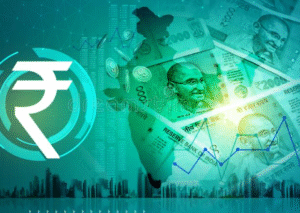$AI $SPX $BTC
#Harris #Trump #Midterms #PoliticalRisk #2024Election #StockMarket #Volatility #Uncertainty #USPolitics #WallStreet #AI #Geopolitics
As the U.S. midterm elections approach their final stretch, both Vice President Kamala Harris and former President Donald Trump have made last-minute appeals to voters. This moment is not only a critical juncture for American politics but also has global ramifications for financial markets. Trump’s influence in Republican circles and Harris’ high-profile role in the Biden administration means that U.S. domestic policy could sharply pivot depending on voter turnout and results. Historically, midterm elections cause temporary volatility in the stock market due to the uncertainty surrounding legislative gridlock or new policy directions. The $SPX, for instance, often sees fluctuations during election cycles as market participants adjust portfolios based on which party appears likely to gain control in Congress. If the balance of power shifts, markets could react sharply, either positively or negatively, depending on perceived economic policy outcomes.
Simultaneously, Wall Street continues to bet on emerging technologies to drive future growth, specifically in the artificial intelligence (AI) and cloud computing sectors. Recently dubbed the ‘Neocloud,’ a second wave of AI-led cloud innovation has caught the eye of both traditional market players and venture capital. Substantial investments are flowing into companies that pivot their business models to integrate AI and cloud services more comprehensively. Publicly listed companies involved in these transformations, such as those tied to $AI and other major technology stocks, may experience significant gains as investors chase the next big technological breakthrough. However, these stocks’ valuations may already reflect strong performance expectations, meaning a failure to deliver innovative products could lead to corrections, adding more pressure on an already volatile market environment.
At the international political level, geopolitical risks remain high, with the ongoing Israel-Palestinian conflict seeing renewed escalation. In particular, the role of Yahya Sinwar, the leader of Hamas in Gaza, has come to the fore again, raising concerns about regional stability and the potential for geopolitical shockwaves affecting global markets. Energy commodities, in particular, could face price surges if there is any substantial disruption to production or trade routes in the Middle East. Although this threat is localized, the interconnected nature of global markets means that consumer confidence, oil prices, and even cryptocurrencies like $BTC might react to escalating tensions. Historically, geopolitical risks have driven short-term spikes in commodities and market volatility, while dampening growth forecasts in regions directly or indirectly affected by the conflict.
With a perfect storm of political risk domestically and geopolitical uncertainty abroad, market participants should remain cautious. While there are opportunities in sectors like AI and disruptive technologies, investors might need to brace for periods of heightened volatility, especially related to pending election outcomes or external conflicts. Diversifying portfolios and maintaining liquidity could be prudent strategies in the current high-risk environment. Analysts note that the U.S. midterms and evolving geopolitical tensions could create temporary trading opportunities but stress that market turbulence is likely, with many fund managers already positioning themselves defensively by reallocating assets to mitigate potential downside risks.










Comments are closed.